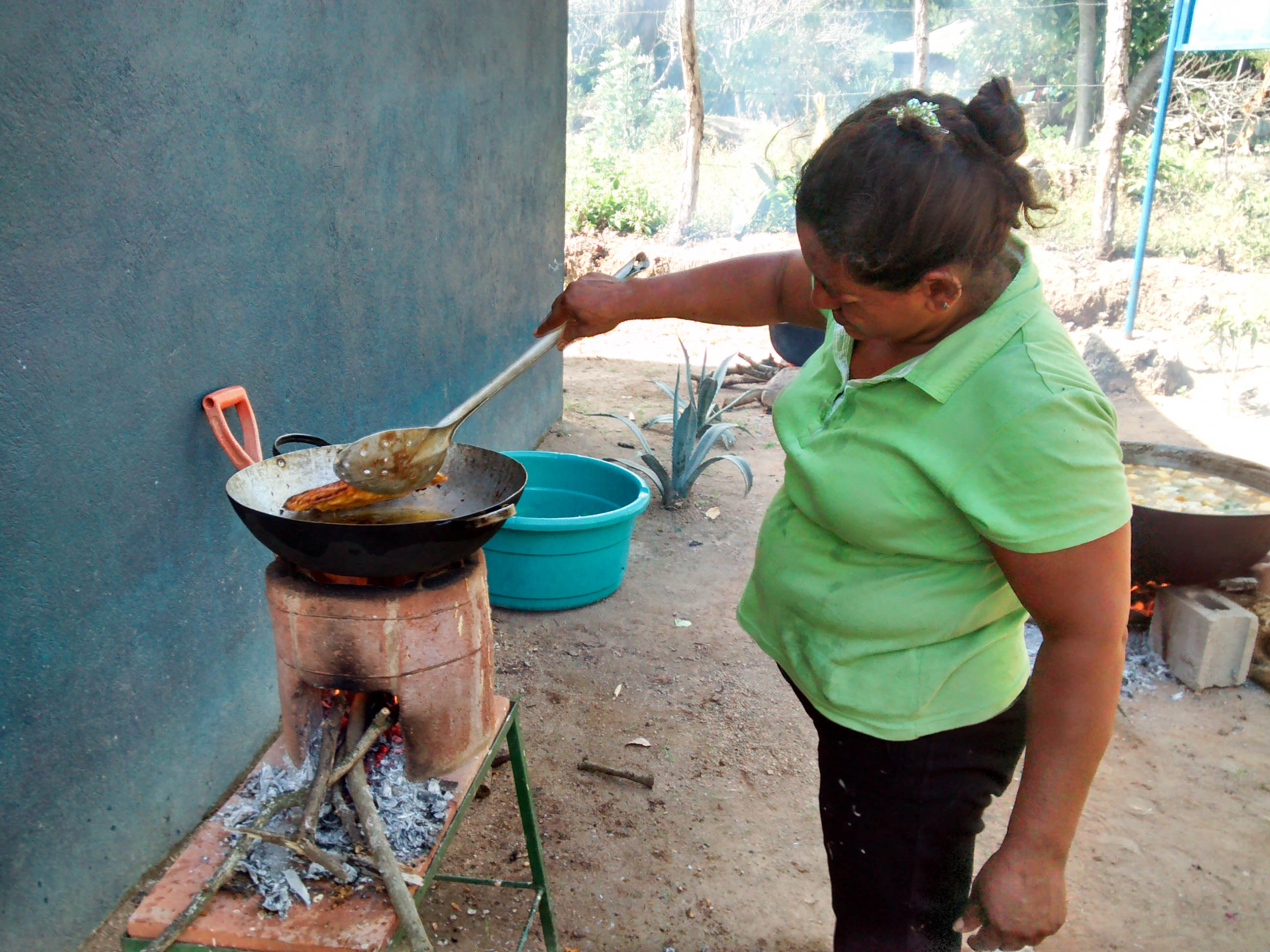By Bryce Gray
Inside Felipa Del Carmen’s tin-roof, dirt-floor home in Nicaragua, piles of wood stand at the ready to keep an indoor fire burning. The mother of six says that a number of her children have battled pneumonia that required treatment at Clínica Verde, a nearby non-profit clinic.

Del Carmen’s children are not alone, as the toll of close and virtually constant contact with smoke is inescapable for most families in the country. Respiratory ailments are common, especially among women and young children who, according to the World Health Organization, “spend the most time near the domestic hearth.”
Step off of the plane in Nicaragua and the first thing you notice is the smell of smoke.
As in many countries throughout the developing world, leña – the Spanish word for firewood – remains the dominant fuel source for cooking.
Smoke-induced pneumonia, lung cancer, bronchitis, asthma and other respiratory illnesses cause an estimated 4 million deaths worldwide every year. In response, scores of projects have been launched by public health crusaders aiming to make home cook stoves cleaner and safer in developing countries, including Nicaragua.
“If you go into the areas where they’re cooking, it’s usually a semi-enclosed space,” said Brian Davis, 71, a retired engineering professor from Oregon who has split much of the last decade between homes in the United States and Nicaragua. “If you look at the walls, the walls are covered in black tar. Their lungs basically are getting the same treatment.”
Exposure to those unhealthy conditions inspired Davis and his wife, Nancy – also a retired college administrator – to develop and market their own clean stove model, known as the Coci-Nica. The squat, cylindrical brick stoves burn wood more efficiently than traditional cook fires while still cooking food in the same amount of time. Davis said more than 5,000 units had been sold in Nicaragua since its development five years ago, with more than 2,000 of those sales occurring in 2014.
Although competition in the emerging cook stove industry is heating up, Davis believes that affordability is paramount in a country where 80 percent of the population lives on $2 a day, and has tried to shape Coci-Nica’s business model accordingly, selling units for $10 to $12 apiece.
“We didn’t realize that we really needed to produce the stoves locally, with local materials and labor, in order to get the cost down to something that people can actually buy,” said Davis, explaining the rationale for the establishment of Coci-Nica’s Nicaraguan-based factory.
Besides local production, the Coci-Nica’s simple design also helps lower the price tag. Davis acknowledges that there are shortcomings associated with the product’s simplicity, but argues that affordability is the ultimate determinant of success.

“Our stove does not have a chimney,” Davis said, emphasizing that the product reduces wood usage – and subsequently smoke levels – by concentrating air to allow for more complete combustion. “If it did have a chimney it would be a better stove, but it would also cost two to three times as much. So, part of our philosophy is that it’s better to solve 80 percent of the problem realistically than 100 percent in a way that actually nobody can buy.”
Davis said that the majority of Coci-Nica stoves have been distributed in the vicinity of their factory near Granada, where the Davises also run a non-profit clinic called Clínica Apoyo. Other clinics and NGOs have helped Coci-Nica gain further traction by selling the product to affected communities elsewhere in Nicaragua.
One eager distributor has been Clínica Verde – the health clinic that treated Del Carmen’s children – located more than a two-hour drive from the Coci-Nica factory. Still, Clínica Verde has distributed 50 of the stoves to its patients.
“In 2014, we saw 1,132 patients for respiratory ailments and asthma,” said Clínica Verde medical coordinator Betsy Dankenbring. “That number represents about 11 percent of our patient population.”
Dankenbring said that the stoves have generated a positive response from area families, noting that, “the price is justifiable by improved health and by using less wood.”
In addition to economic hurdles, Davis says there is a cultural “acceptance curve” with which the stove also needs to contend. For example, some Nicaraguans balk at the novelty of clean stoves.
“Even though they’re still cooking with wood, it’s not the way they’ve traditionally cooked,” said Davis.
For others, cooking with wood is a matter of preference even when cleaner, more efficient alternatives are available.
“Even people that are fairly well off and have gas stoves will cook their beans with wood,” said Davis.
Despite the obstacles, Coci-Nica is exploring ways to expand production, perhaps by opening franchises and other factories around the country – an investment that figures to be a recipe for improved health for Nicaraguans.


